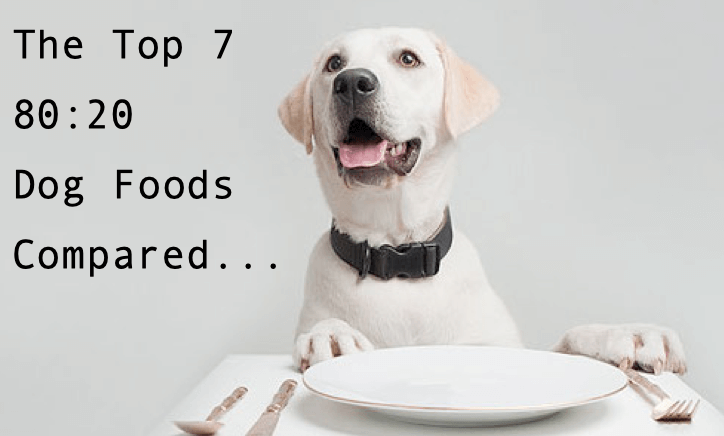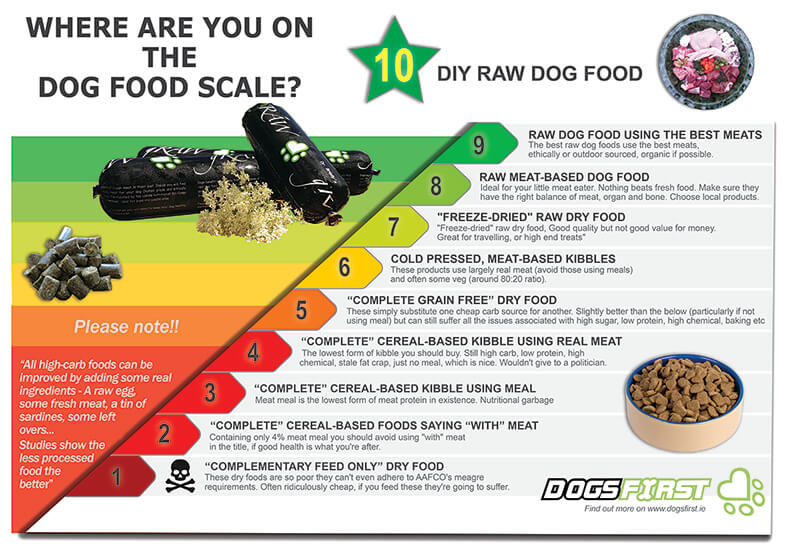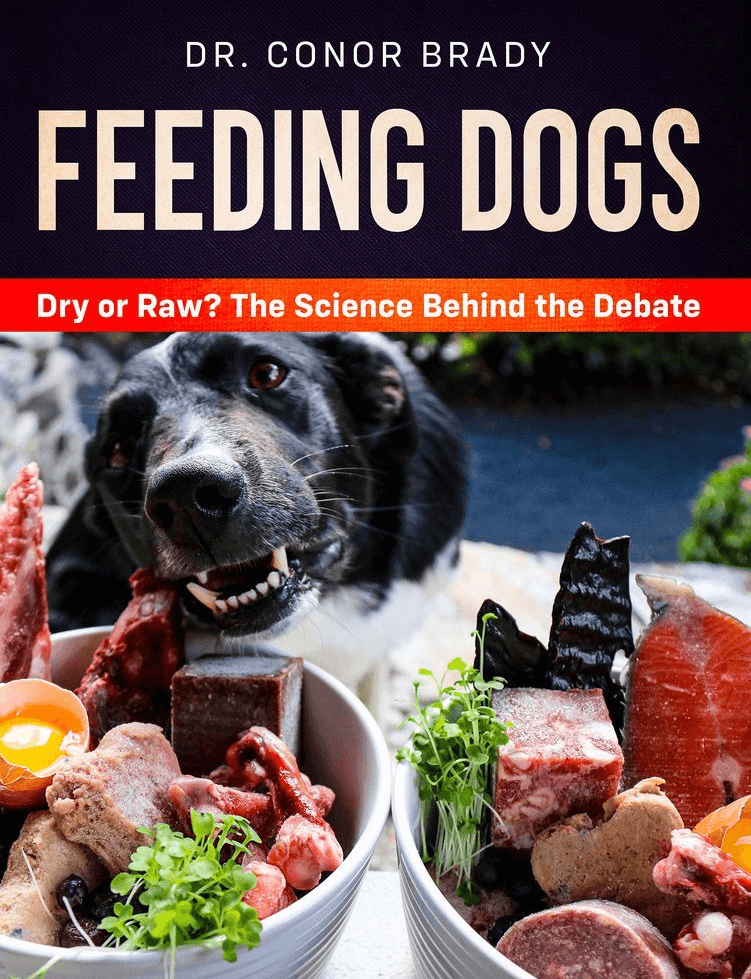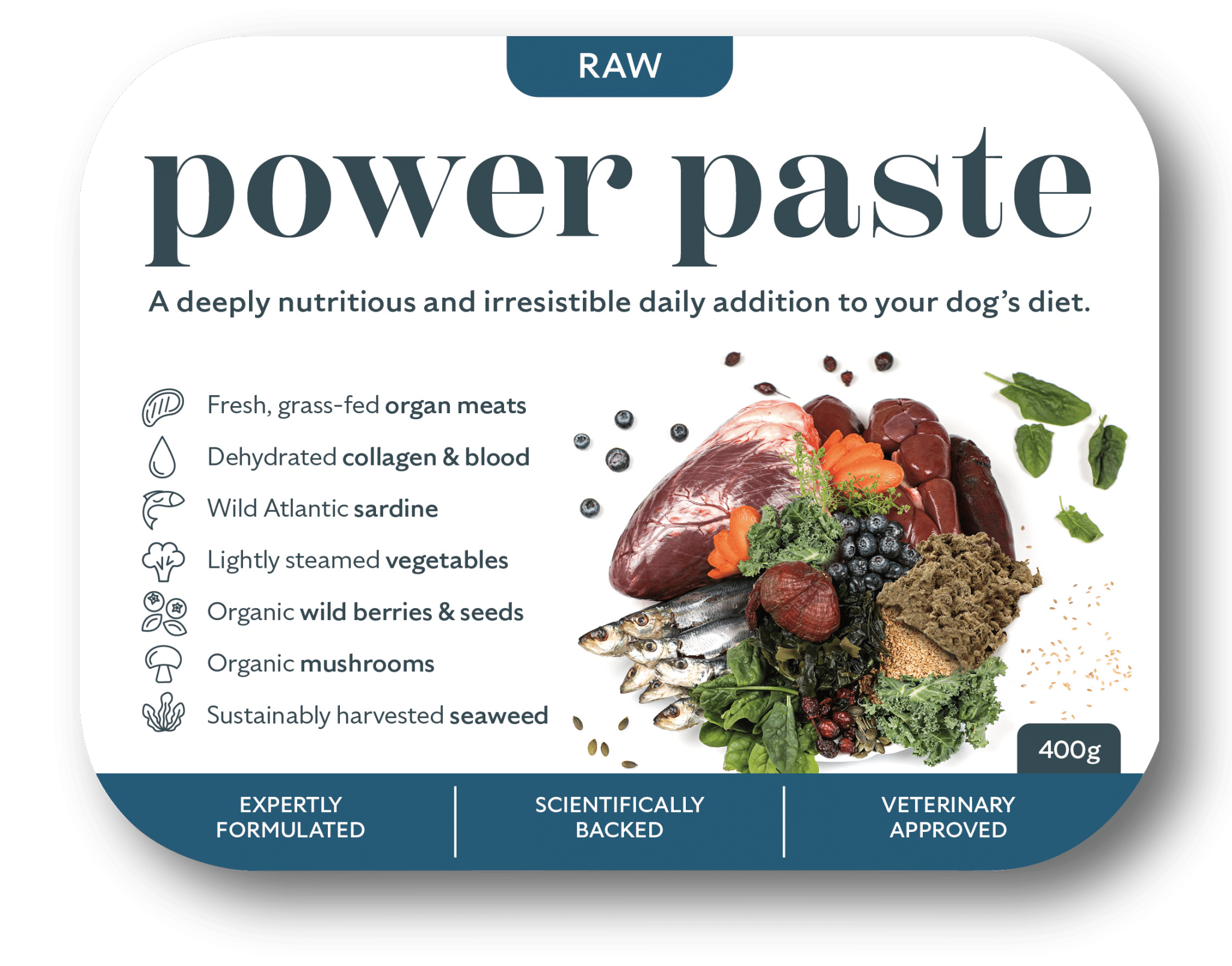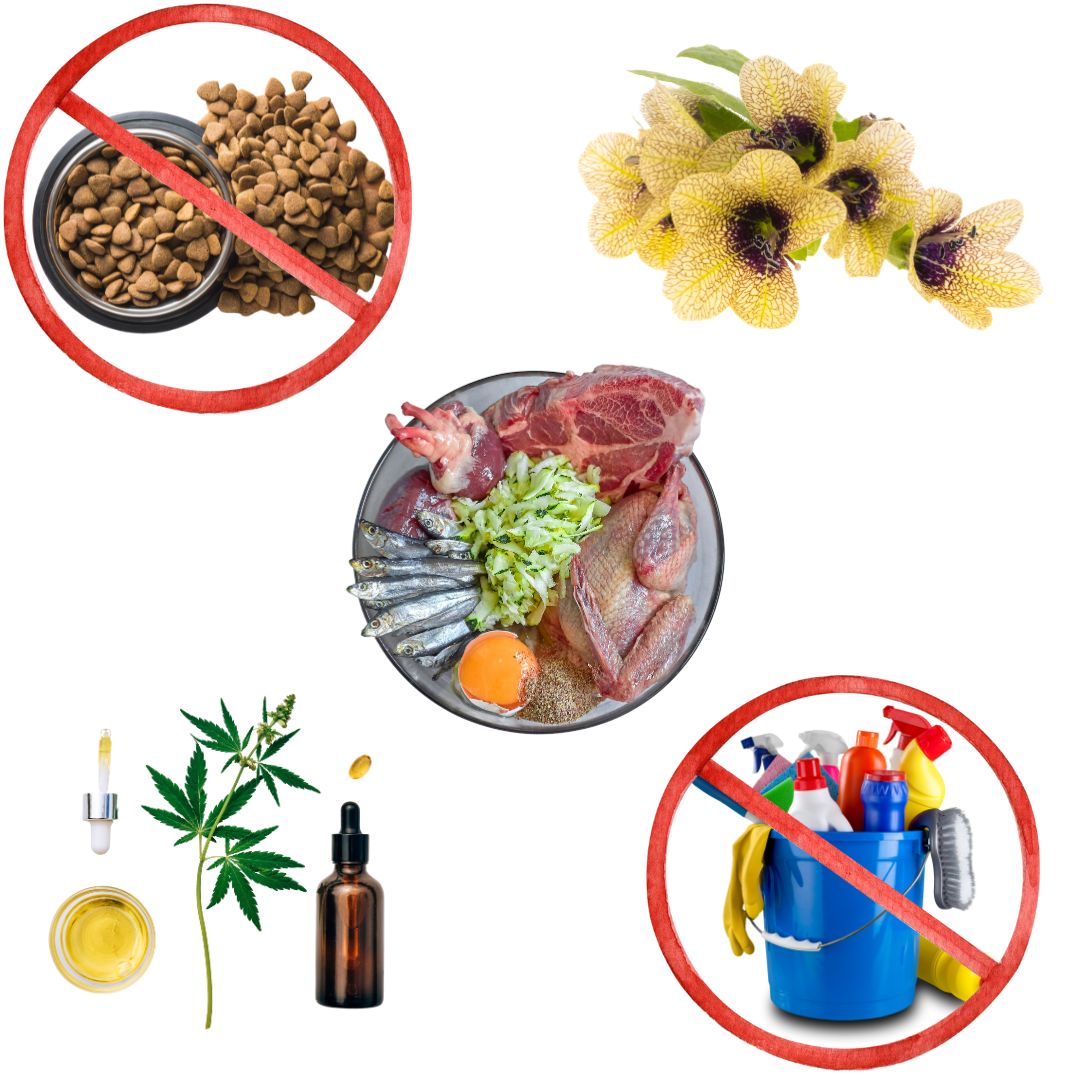We Compare the Top 10 80:20 Dog Foods Available in UK for Meat Contents and Value for Money. Again the Results Might Surprise You…
Last week we compared the Top 10 Grain-Free dog foods out there available to Irish and UK residents. It gave you some simple tips to take note of that will help you quickly compare the quality and value-for-money proposition of each of these products. We then applied a single rating figure to the products tested to create a form of league table. The results may surprise you, in that some of the more popular (better advertised) products can score absolutely dismally and are not worth half the money they ask for. To refresh your memory, as it’s also important here, the tips included:
- Ignore the front label, go straight to the ingredients
- How much real meat are they using?
- Beware of window dressing, you should add this stuff in yourself, vastly superior.
We are going to structure today’s article on 80:20 dog food in much the same way with a few minor tweaks. 80:20 is the term used for kibbles that include an approximate proportion of 80% meat and 20% fruit and veg additions. They use no carb filler whatsoever. From a quality point of view, at least in terms of kibbles, they are assumed to be of the highest quality. They are often priced that way anyway! That said, know that they still only sit at around rung 6 of 10 up the pet food ladder as it is still a processed and pulverised product made on unknown meat ingredient quality and preserved. There is still no alternative to species appropriate raw dog food.
The 80:20 Dog Food Comparison Chart…
The following list is not exhaustive by any stretch. It is based on my own knowledge and a Google search. However, it should give you an idea of how to compare your own food that you have sitting in front of you. The problem with comparing 80:20 dog foods is that there tend to be less “flavours” and often their meat proteins are mixed. Thus, where possible, I used their “Original” recipe for adult dogs. I used their own UK-based websites where possible for a price and attempted to find the rest as cheap as possible. I have linked to each product discussed to show you where I found them. “Meat Protein Content” is all the meat ingredients added together with meat fats and oils excluded. “Real meat” is fresh/raw going in (i.e. not meal which we want as little as possible of). Organ meats (such as liver, heart, kidney, are desirable ingredients). Cooking temperature is important, the lower the better. A cooking temp of 90 degrees was given a 2. Anything below this got 1 and anything above this (or simply not mentioned) got 3. The number in parentheses is the ranking for the product in that column. “Score” is a sum total of these figures with the lowest figure being the most favourable.
| Brand | Meat Protein Content | Quantity of Real Meat Used | Organs Used? | Cooking Temp (1 low, 3 high) | Best Price | Cost/kg | Score |
| ZiwiPeak Lamb & Tripe | 98% (1) | 98% (1) | Yes (0) | (1) | €68.90 2.5kg | €27.56/kg (7) | 10 |
| Orijen Original Mix | 81% (2) | 60% (2) | Yes (0) | (2) | €86.47 11.4kg | €7.59/kg (5) | 11 |
| Patron Original Mix | 78% (4) | 55% (3) | No (1) | (2) | €61.99 10kg | €6.20/kg (4) | 14 |
| Eden Original Mix | 76% (5) | 38.5% (6) | Yes (0) | (2) | €54.60 12kg | €5.25/kg (3) | 16 |
| Simpsons Land & Sea | 76% (5) | 40% (5) | No (1) | (3) | €59.91 12kg | €4.99/kg (2) | 16 |
| AATU Chicken (cheapest) | 80% (3) | 50% (4) | No (1) | (2) | €76.13 10kg | €7.61 (6) | 16 |
| AKELA Chicken (cheapest) | 73% (7) | 35% (7) | Yes (0) | (3) | €43.83 10kg | €4.38 (1) | 18 |
The 80:20 Dog Food Results Discussed
To anyone in the know, it will come as no surprise that Ziwipeak from New Zealand topped the list, at least quality wise. Even it’s horrific price couldn’t knock it down a bit. The ingredients are not only all meat and all fresh, but the bits they use are also fantastic. It easily the best of the bunch. It’s like they got the whole of the lamb / sheep (at least what was left after the choice cuts are sold to humans, let’s face it, still good stuff though…) and gently cooked (they say “air-dried”) into a pellet. The ingredients include…
Lamb Tripe, Lamb, Lamb Heart, Lamb Liver, Lamb Lung, Lamb Kidney, New Zealand Green Mussel, Lamb Bone…
That said, at €27.56 PER KILO, is an unacceptable price tag. I honestly have no idea why anyone would buy this product when fresh lamb bits and pieces from your butcher costs one-quarter of that, and would be infinitely more nutritious. Of course, you can’t compare dry food to fresh food, price wise, without first factoring in the water content differences…
Lets say chicken is €3/kg. Well, fresh chicken contains 75% water, dry food only contains 10% water. So the latter is more “chicken dense” than the former (though the fresh kind is a far, far more superior quality and cut, let’s face it). To balance this quickly, we simply multiply the fresh chicken price by 2.5, giving us an approximate value on what it would cost to dry this chicken out to 10% water content, in this case €7.50 per kilo. Hence, dry meat treats seem very pricey per kilo (€8-€10 per kilo), but they’re often not too bad when you think about it this way.
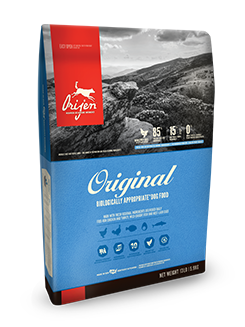 In terms of Ziwipeak, in my opinion, I would go for a cheaper brand and add in some organ meats when and where I can. It doesn’t even make sense to use it for treats (you can buy 1kg of beef liver, heart and kidney, chop it up and bake it, make your own dry topper on ingredients that cost you no more than €3/kg! More on making your own dog treats here).
In terms of Ziwipeak, in my opinion, I would go for a cheaper brand and add in some organ meats when and where I can. It doesn’t even make sense to use it for treats (you can buy 1kg of beef liver, heart and kidney, chop it up and bake it, make your own dry topper on ingredients that cost you no more than €3/kg! More on making your own dog treats here).
Orijen comes in second place. Advertised as the world’s most highly rated pet food (though coming in for some serious flack lately), Orijen uses a lot of fresh meat ingredients (only 1/4 of their meat protein ingredients are meat meal), a few organ meats, some nice fresh fruit and veg and they can put it out at a slightly more reasonable price of €7.59/kg, though you can find it cheaper on Amazon. For what you get, this is a far more reasonable prospect than Ziwipeak. However, the large amount of negative publicity previously mentioned will not be doing their sales any good.
In third place on our leader board comes Patron 80:20. I’m delighted about this as I will be helping them to bring a range of raws to the market in a few months, as I announced at the launch of Patron Project some weeks ago. While Patron use slightly less meat than Orijen (78% versus 81%), with slightly less real meal inclusions (55% versus 60%), they are putting it out significantly cheaper than Orijen, which balances it up a bit. And it travels less of a distance, with Patron being made in the UK on UK ingredients, and Orijen coming from Canada, so you’d be hoping it’s fresher, but who knows there.
The middle of the table, all joint on 16 points, is Eden, AATU and Simpsons. The standout thing going against them here is significantly less fresh meat (and thus more meat meal) inclusions. You simply shouldn’t be wasting your money on meat meal guys. It is the stewed up leftovers of the meat industry.
Renedering staff give the inside scoop on meat meal
How pet food companies are trying to hide how much meal they are using
Occupying the bottom of the table is Akela. It uses the least meat and the most meat meal although, in their defence, they are the cheapest.
Who’s The Outright Winner?
Its rarely easy to pick a winner in these situations, everyone has their own set of criteria in their heads when choosing a product, I can only give you mine. In terms of quality and value for money, and with price ruling Ziwipeak out, in my opinion, I would possibly still be putting Orijen on the top of the list, and give them the benefit of the doubt until the court case is decided.
However, as we highlighted in our article on choosing the best grain-free out there, Patron again dangles in front of us the irresistible proposition that it gives 16% of the price of each and every bag to the animal charity where you buy it from. This means your money not only stays in your own country, benefitting your own local economy, but all the proceeds go to an animal charity, so you are helping out these amazing organisations simply by buying what is one of the best 80:20’s out there.
I’m a little embarrassed at this as, again, I will be helping Patron to bring a range of raw dog food’s to shelters by the summer of 2019, so it looks like blatant favouritism, but this is exactly why I got involved. The prospect of a great product where all the money goes to charity made such instantly good sense to me that I leapt on board. I absolutely knew it was going to change things in the pet food world and I want raw to be sold the same way. Imagine, all the raw brands you know and love (as well as Patron’s own brand, where higher margins are offered to the organisation in question) only the money is kept local with those who need it most. It simply doesn’t make sense to buy your pet food from anywhere else. Learn more about Patron Project here.
The Undiscussed Concerns About 80:20’s…and Pet Food as a Whole
Sorry to end on a bummer but while everyone raves about 80:20’s being so good as they mimic what a dog might eat in the wild, we must not forget that these foods are 1) processed, 2) cooked and 3) preserved. While they may be based on far superior ingredients, cooked at lower temperatures and more naturally preserved than the vast majority of other pet foods, we have must not forget everything we have learned about the possible effects of cooked meat in humans. The below is taken from my forthcoming book and explains why humans are advised to eat a matchbox amount of cooked meat per day at a maximum:
Meat source aside, another crucial consideration in protein quality is digestibility as all the protein in the world is no good to you if you cannot digest and absorb it. Animal protein is more digestible than plant protein (Burns et al. 1982; Brown, 1989). We can all testify to this. When Dublin Bay was expanding in the 1980s, three divers had the unfortunate task of tracking undigested plant debris (mainly tomato seeds and corn kernels, apparently) from a sewage outlet across the Dublin seabed to document the course of underwater currents. Nice!
While cooking increases the digestibility (and thus biological value) of vegetable items by breaking down tough plant fibre (Oste 1991), allowing an animal access to the goodies inside, it is the direct opposite with meat protein (Teodorowicz et al. 2017). Processing can negatively affect amino acids in a variety of ways, through proteolysis (the break down of amino acids into smaller particles), protein cross-linking, protein-polyphenol reactions, oxidative reactions and Maillard reactions (Meade et al. 2005). Of all processing factors, and like many nutritional components, heat is proteins biggest enemy. When meat is heat treated it promotes a non-enzymatic reaction between proteins and sugars, making proteins, usually lysine and argenine, aggregate and crosslink. You can watch this mutation occurring slowly when your clear egg turns to egg white on the pan. Or when you leave that nice bit of steak too long on the pan and you spend the next hour trying to chew your way through it. Termed a Maillard reaction (after it’s founder 100 years ago, we will return to these later), it is the reason high cooking temperatures increase the “mutagenicity” of meat (Knize et al. 1985 & 1999, Felton and Knize 1991). This mutated protein is significantly more difficult to digested by humans (Denis et al. 2015), cats (de Wit 2013) and dogs (Guildford et al. 1996). Tran et al. (2008) noted the undesirable effects of extrusion cooking largely stem from Maillard reactions including a reduction of protein quality, decrease in palatability and a loss of heat-liable vitamins.
More worryingly, cooking meat under high temperature produces Maillard reaction products (MRP’s) and these are linked to cancer (Olesen et al. 2008), inflammatory and age-related degenerative processes (Webster et al 2005) as well as possibly playing a role diabetes, and both renal and cardiovascular disease (Tessier and Birlouez-Aragon 2012).
The MRP acrylamide in particular have been studied intensively over the past decade, largely as it so carcinogenic (Olesen et al. 2008) and because it so prevalent in so many of the foods we enjoy each day (from french fries to biscuits, they’re everywhere processed food is). Interestingly, acrylamides were first discovered when a Dr Eden Tareke was comparing acrylamide levels in wild animals and domesticated pets. She found unexpectedly high levels of acrylamides in pets attributable to consumption of highly processed food (Everts 2012). Van Rooijen et al. (2014) examined 67 extruded, canned, and pelleted dog and cat foods used for growth and maintenance for the presence of a variety of harmful MRP’s. They found that the average daily intake of certain MRP’s were 122 times higher for dogs and 38 times higher for cats than the average intake for adult humans. The authors concluded for more research on the long-term health implications of MRP consumption by dogs and cats.
Worse still, these complexes can alter our immunoreactivity towards the food protein in question, increasing senstivity which can result in allergy to that protein in both humans (Teodorowicz et al. 2017) and cats (de Wit 2013). Guildford et al. (1996) found cooked, indigestible protein complexes are known to arouse the immune system around the dog’s intestinal mucosa, resulting in gut complications.
All these reasons draw into question the safety behind cooked commercial pet foods containing meat protein, certainly considering the multiple high temperature steps used. Gentzel (2013) highlights that the bioaccumulation of advanced glycation end products (AGE’s) resulting from Maillard reactions, is linked to chronic systematic inflammation (meatinflammation) and cancer in both humans and dogs, and questions the suitability of a kibbled meal based diet in dogs as a lifetime strategy.
So yes, while some grain-frees and now 80:20’s are clearly better than others, please remember these products are no replacement for fresh, raw dog food. If you are using these products you need to add in as much fresh stuff as you can, a handful of blueberries here, a raw egg there. Of all ingredients thought, they want fresh meat on the bone. If adding this to kibble, make sure to separate the meals. So you might do dry in the morning (scatter around the garden, make them work for it!) and raw on the bone in the evening as the latter needs the tummy acids to itself.

